The standard kitchen countertop height is typically 36 inches from the floor, providing a comfortable working level for most people. Meanwhile, the standard depth of kitchen countertops, from the wall to the edge, is 24 inches to accommodate most appliances and provide sufficient workspace. Adjustments can be made to these dimensions to cater to specific needs, but these measurements serve as a widely accepted guideline.
The kitchen, a focal point of the home, thrives on standardized measurements. These aren’t mere numbers but a blend of ergonomic insights and aesthetic appeal. By embracing these standards, we ensure our kitchens are both functional and visually captivating, setting the stage for delightful culinary adventures.

Evolution of Kitchen Countertop Standards
From the rustic wooden tables of yesteryears to today’s sleek surfaces, kitchen countertops have witnessed remarkable transformations. The emergence of the 20th century brought urbanization and a need for standardization, leading to the now-familiar 36-inch countertop height, influenced by ergonomics and the integration of new kitchen appliances.
The 24-inch depth standard, too, was shaped by the evolution of kitchen gadgets, ensuring a streamlined design and efficient space utilization. These standardized measurements, far from being mere dimensions, epitomize the blend of functionality and the kitchen’s ever-evolving role in our homes.
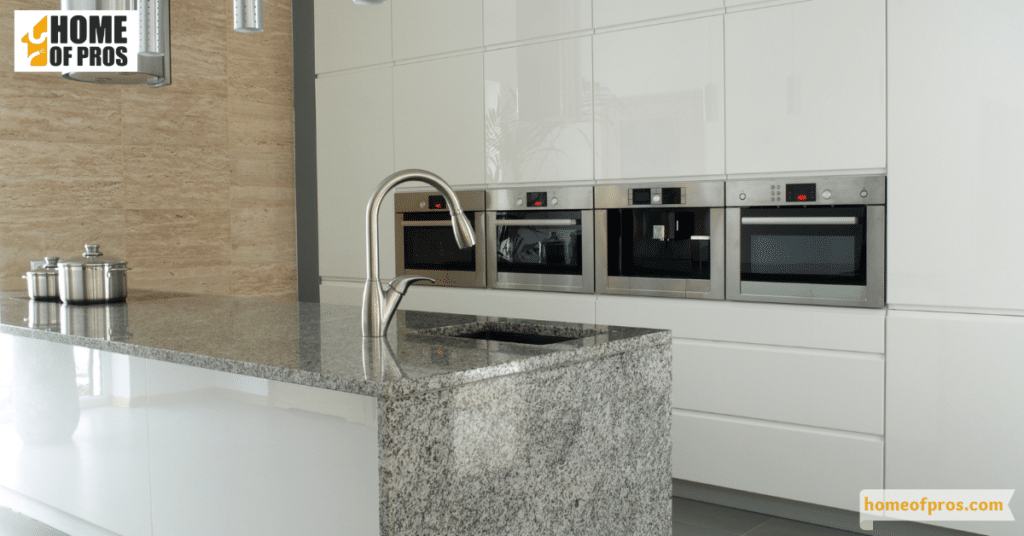
Standard Kitchen Countertop Height: Breaking Down the 36-inches
The 36-inch height for kitchen countertops has become the widely accepted norm, chosen with precision after evaluating the average person’s comfort during culinary tasks. This height not only prioritizes ergonomic considerations, reducing strain and promoting efficiency but also aligns perfectly with standard kitchen appliances, ensuring a seamless and harmonious integration in design.
However, while the 36-inch standard dominates modern kitchens, it’s not a one-size-fits-all. Some homeowners or designers, catering to unique needs or design visions, might opt for alternative heights. Whether it’s to accommodate taller or shorter individuals, or to achieve a specific aesthetic, flexibility in height demonstrates the balance between convention and personalization in kitchen design.
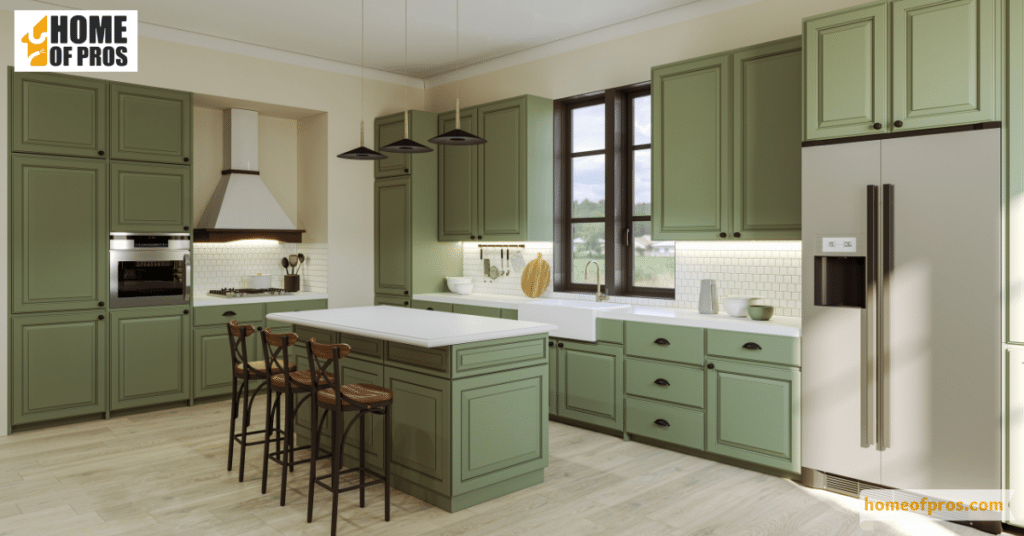
Standard Kitchen Countertop Depth: Why 24 inches?
In the intricate world of kitchen design, every inch matters. The choice of a countertop’s depth, while seemingly simple, has profound implications for the kitchen’s functionality and feel. But why has the 24-inch standard become so prevalent?
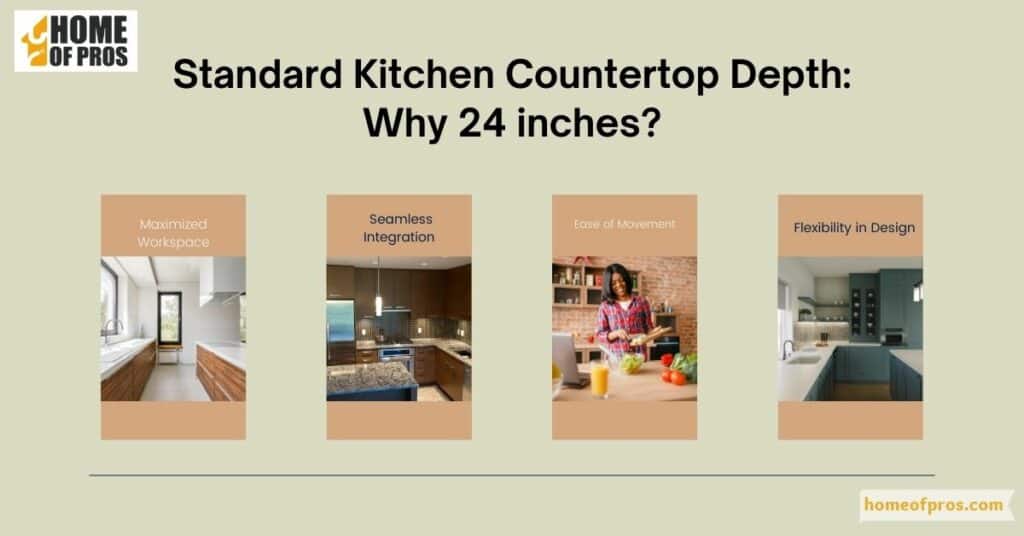
1. Maximized Workspace: Enhancing Culinary Versatility
The 24-inch depth standard isn’t just a random measurement; it’s a deliberate choice to maximize workspace within the kitchen. This depth provides ample room for a range of culinary activities, from chopping and dicing to rolling out dough or setting up an elaborate spread for a dinner party.
It accommodates the diverse needs of home chefs, ensuring that there’s enough real estate for both meal preparation and presentation. Whether you’re crafting a multi-course feast or a simple weeknight dinner, the 24-inch depth offers the space required to exercise your culinary creativity.
2. Seamless Integration: Coherence in Kitchen Design
A significant advantage of the 24-inch depth standard is its compatibility with most kitchen appliances. It aligns harmoniously with the dimensions of standard appliances, such as ovens, dishwashers, and refrigerators. This synchronization creates a cohesive and streamlined appearance in the kitchen.
The appliances fit snugly beneath the countertops, presenting a unified look that enhances the overall aesthetics of the space. This not only adds a touch of sophistication to the kitchen but also ensures that the available space is used efficiently.
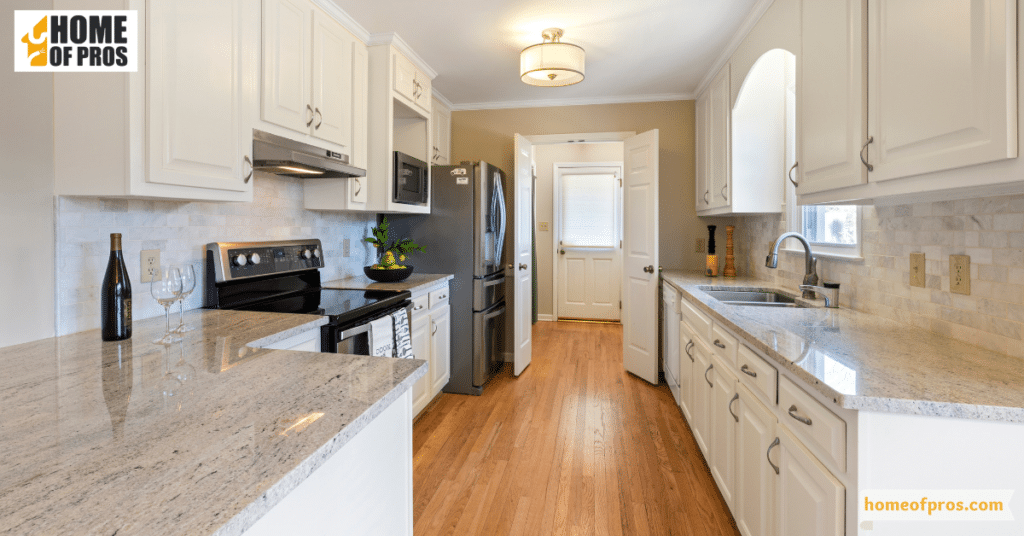
3. Ease of Movement: Promoting Comfort and Efficiency
Another key benefit of adhering to the 24-inch standard is its contribution to user comfort and efficiency. Kitchens are dynamic spaces where individuals move about, often in a hurry to prepare meals or serve guests. The 24-inch depth standard allows for easy and unrestricted movement within the kitchen. It prevents users from overreaching, stretching, or feeling cramped, thus reducing the risk of strain or discomfort during daily culinary tasks.
4. Flexibility in Design: Tailoring Countertops to Unique Needs
While the 24-inch depth standard is widely accepted, it’s not a rigid rule. Designers and homeowners have the flexibility to deviate from this norm to meet specific requirements. Deeper countertops, for example, might be favored in gourmet kitchens where extensive prep space is essential. Conversely, in compact kitchen layouts, shallower depths can be a strategic choice to optimize space and create an open, airy feel.
In essence, the 24-inch depth standard stands as a reflection of both ergonomic principles and aesthetic considerations. While it serves as a reliable guideline, the beauty of design lies in its adaptability, proving that the kitchen remains a canvas for both convention and creativity.
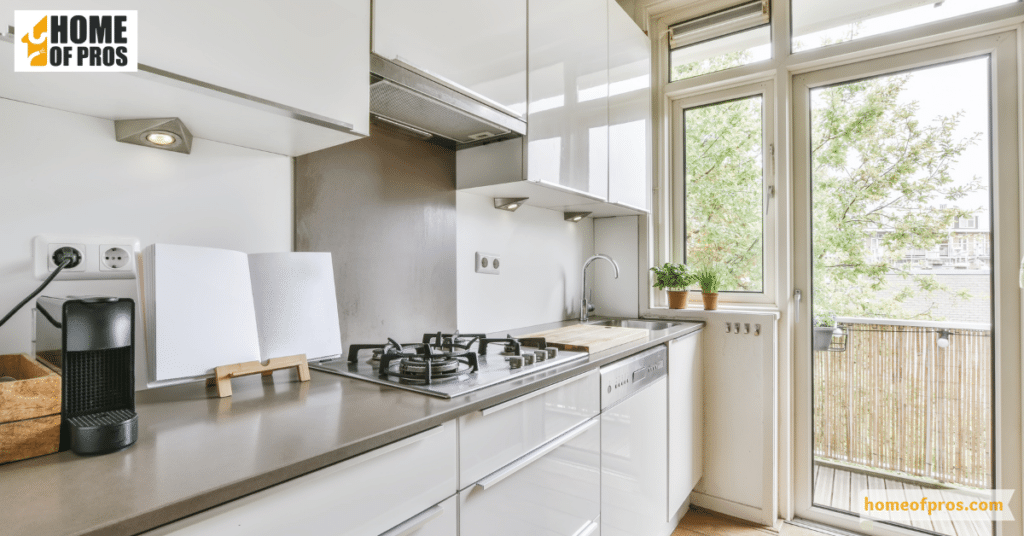
Adjusting Standards for Specific Needs
Standard kitchen measurements, while foundational, must sometimes yield to specific requirements. For those relying on wheelchairs, countertops may be lowered to improve accessibility and ease of use. Similarly, the heights might be tweaked for exceptionally tall or short individuals to ensure ergonomic comfort.
Beyond these considerations, unique design visions or specialized appliances can necessitate deviations from the usual standards. In essence, while traditional guidelines offer a starting point, it’s the customization that truly tailors a kitchen to its users’ needs.
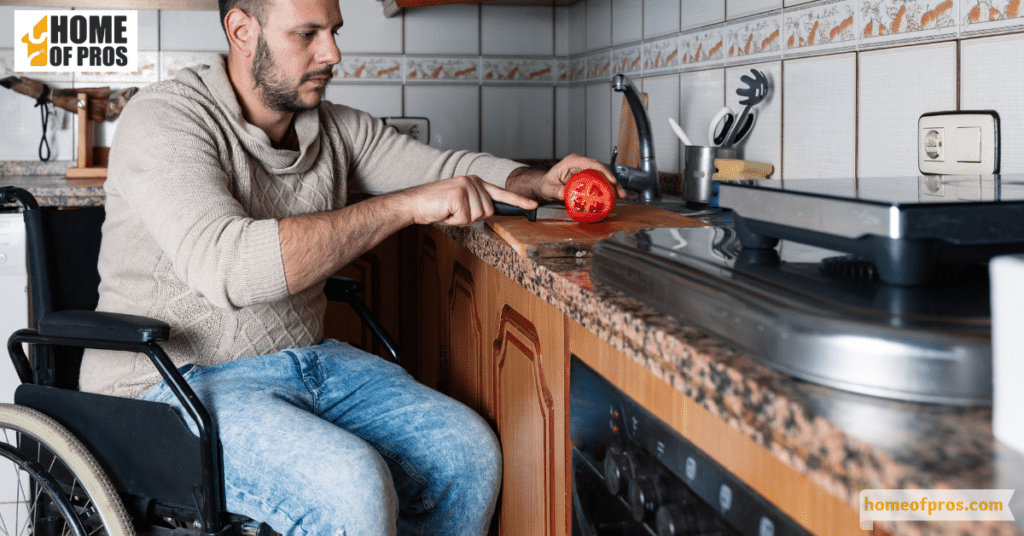
Unique Designs and Special Appliances
Kitchens have always been spaces of both utility and creativity. While standardized measurements guide most kitchen designs, there are moments when unique visions or specialized appliances necessitate a departure from the norm.
Unconventional kitchen designs often emerge from specific lifestyle needs or aesthetic aspirations. For instance, a homeowner passionate about baking might opt for broader countertop depths to accommodate the sprawling space required for kneading dough or laying out pastries. In contrast, someone with a penchant for gourmet cooking might prioritize an extended countertop height to comfortably fit a sous-vide machine or a specialized stand mixer.
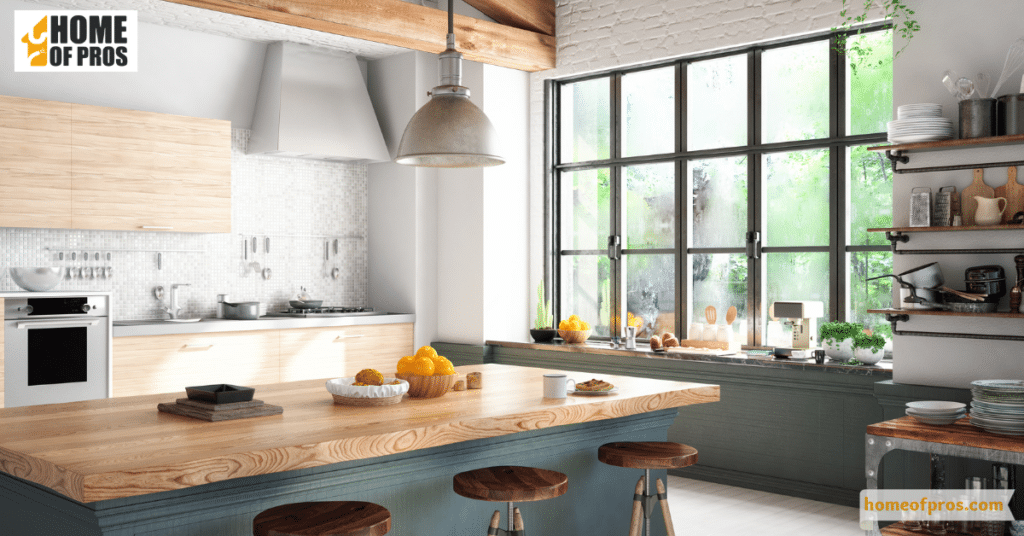
Conclusion
In the dance of design, standardized measurements serve as the rhythm, guiding the steps and ensuring the functionality of our kitchen spaces. They provide a reliable foundation, optimizing the user experience for the majority and ensuring seamless integration of appliances and furnishings.
However, while standards are crucial, it’s the flair of personalization that brings the dance to life. Embracing flexibility in design ensures that every kitchen, beyond being just functional, resonates with the unique stories and needs of its inhabitants.











